Europe Proposes Banning Internal Combustion Cars By 2035

Last week, the European Union proposed banning the sale of all new internal combustion vehicles starting in 2035. With several member nations proposing restrictions in the coming years, EU leadership feels it can accelerate the timeline to force electric vehicles as the de facto mode of transportation. The European Commission has suggested making it illegal to sell gas or diesel-powered vehicles in 14 years, with aims to reduce CO2 emissions produced by automobiles by 55 percent (vs 2021 levels) by 2030.
But countries that still produce vehicles have expressed reservations about the scheduling. France absolutely agrees with mandating restrictions that would reduce greenhouse emissions. Though President Emmanuel Macron’s office has been pressing that hybrid vehicles would be able to do much of the heavy lifting and fears that an outright ban of internal combustion could hamstring the industry if conducted too early. Germany, which manufacturers more vehicles than other EU member nations, is of a similar mind.
“I believe that all car and truck manufacturers are aware that stricter specifications are coming. But they have to be technically feasible,” German Transport Minister Andreas Scheuer explained to Deutsche Presse-Agentur (DPA).
German manufacturers have been signaling a transition toward EVs louder than almost anyone. But the regional regulatory bodies have expressed concerns about accelerating the timeframe. This has been particularly true of Scheuer, who remains concerned about what’s actually achievable. He’s proposed phasing out fossil fuel combustion by 2035, only if synthetic fuels can be perfected to a point that wouldn’t force ICEs off the road.
There are concerns that synthetic fuels aren’t sufficiently energy-efficient to produce with confidence and will ultimately result in more pollution than battery-driven automobiles. But this is wholly dependent upon how much both technologies progress and how the infrastructure is set up. For example, Germany’s aversion to nuclear power resulted in it building a slew of coal-fired powerplants to offset renewable sources that ultimately reduced its air quality. Sourcing electricity from a coal-dependent area isn’t better for the environment, especially if the area is required to build thousands of EV charging points to make it possible. By contrast, synthetic fuels can use our existing fueling infrastructure. But they suffer from some of the pitfalls shared with hydrogen power (heavy efficiency losses during production) and are still dependent upon access to fossil fuels.
Unfortunately, studies tend to support whatever industry commissioned them in the first place. Though there’s sufficient evidence to suggest that the greenest solutions tend to be the ones that are the most localized. Manufacturing (or disposing of) batteries isn’t exactly good for the environment, nor is shipping them around the world. And the same goes for fuel refinement. If you’re drilling for crude, only to send it halfway around the world to be refined and shipped back, then you’re needlessly broadening your carbon footprint. But it’s a fairly normal practice in developed countries.
These issues are often more about perception and finances than actually deciding what’s possible or which technologies/practices will offer the lowest total amount of pollution. This frequently is embodied by the blind faith environmental activists seem to place on EVs and manufacturers’ willingness to court them while keeping internal combustion vehicles perpetually on deck.
“This is the sort of ambition we’ve been waiting to see from the EU, where it’s been lacking in recent years,” Helen Clarkson, chief executive of the Climate Group, a non-profit group that collaborates openly with business and government in a complicated, ethical slurry, told Reuters.
“The science tells us we need to halve emissions by 2030, so for road transport it’s simple — get rid of the internal combustion engine.”
In truth, the science is overwhelmingly complicated and European Union has been one of the biggest proponents of swapping to EVs, even if some of its other environmental actions have backfired horribly in the past.
While we already mentioned Germany’s air quality, the best example has to be Europe’s former love affair with diesel. In the early 1990s, the continent was operating under the assumption that diesel-powered vehicles tended to be more economical than their gasoline-fueled counterparts and thereby must be less taxing on the environment. Governments prioritized the fuel accordingly and diesel-powered passenger vehicles became the norm. Two decades later and Europe is still reeling from that sooty mistake, though diesel technology improved quite a bit thanks to the unbridled support it received. Electrification could be in for a similar future if not enacted responsibly — ditto for synthetic fuels, hydrogen, or any other miracle solution to our perpetual hunger for the planet’s resources.
What we’re relatively certain of is that introducing alternative energy solutions has required billions of dollars and will cost billions more if Europe is serious about adhering to these targets. La Plateforme Automobile (PFA), France’s primary industry lobby, estimates another 17.5 billion euros ($20.8 billion USD) will need to be spent in the middle of the next decade to continue developing the necessary infrastructure to facilitate the desired changes. Germany is looking at probably thrice that amount, with some analysts suggesting the European lobbying metrics are far too conservative. The European Commission is already operating under the assumption that simply building the necessary charging infrastructure will require over $100 billion by 2040.
Electrification will also result in widespread job losses, with PFA suggesting France would remove 100,000 automotive-related positions (over half the industry’s current strength) by 2035. Germany’s substantially larger automotive workforce would probably lose several times that figure.
Despite the industry habitually voicing a strong commitment toward electrification in press materials, lobbying groups tend to oppose governments prohibiting the sale of any type of vehicle. Most are telling the EU that a mixed approach is best, with automakers continuing to pursue all technologies until the market decides a clear winner. This continued to be true after the commission issued its latest proposal, reminding us that what’s being said isn’t always indicative of what’s being done. That doesn’t necessarily mean the mixed approach is wrong. But it serves as a reminder that it’s often easier to run with a solution that feels or sounds good than spending the extra time to figure out what’s actually going to be best — whether that pertains to consumer needs, financial reports, or what’s going into our atmosphere.
Then again, your author is stupidly operating under the assumption that these are serious conversations when there’s overwhelming evidence that manufacturers and government actors simply make arbitrary environmental or technological promises that are ultimately forgotten and reintroduced five years later as if they’re wholly novel concepts.
[Image: JL IMAGES/Shutterstock]

A staunch consumer advocate tracking industry trends and regulation. Before joining TTAC, Matt spent a decade working for marketing and research firms based in NYC. Clients included several of the world’s largest automakers, global tire brands, and aftermarket part suppliers. Dissatisfied with the corporate world and resentful of having to wear suits everyday, he pivoted to writing about cars. Since then, that man has become an ardent supporter of the right-to-repair movement, been interviewed on the auto industry by national radio broadcasts, driven more rental cars than anyone ever should, participated in amateur rallying events, and received the requisite minimum training as sanctioned by the SCCA. Handy with a wrench, Matt grew up surrounded by Detroit auto workers and managed to get a pizza delivery job before he was legally eligible. He later found himself driving box trucks through Manhattan, guaranteeing future sympathy for actual truckers. He continues to conduct research pertaining to the automotive sector as an independent contractor and has since moved back to his native Michigan, closer to where the cars are born. A contrarian, Matt claims to prefer understeer — stating that front and all-wheel drive vehicles cater best to his driving style.
More by Matt Posky
Latest Car Reviews
Read moreLatest Product Reviews
Read moreRecent Comments
- Daniel J I generally love colors outside of the normal white, black, or silver. The biggest issue we've had is Mazda tends not to put the colors we want with the trim or interior we want.
- Daniel J If you believe what Elon says, he said on X that the plan is expand at current locations and make sure that the current chargers are being maintained. Like I said on the previous thread on this, they probably looked at the numbers and realized that new chargers in new places aren't cost effective.
- Daniel J How is this different than a fully lifted truck? I see trucks rolling off the lot with the back lifted already, and then folks get the front lifted to match. Are there specific "metrics" at how high they can and can't be? The example shown has the truck's front lifted more than normal, but I've seen these around here where the backend is dropped and the front end is at a regular height.
- Theflyersfan I think color is FINALLY starting to return to car lots. After what seems like over a lost decade of nothing but shades of gray, whites, and black, I'm seeing a lot more reds and blues creeping into luxury car lots. Except Audi and Volvo. They still have at least 6-8 shades of gray/silver. But they at least have a nice green. Honda and Acura seem to have a bunch of new colors. And all carmakers need to take a serious look at the shades of red seen at the Alfa Romeo lot and tell themselves they want that because that looks amazing.
- Bd2 Well, it's no Sonata, nor does it have the panache of the Optima.

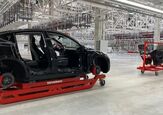















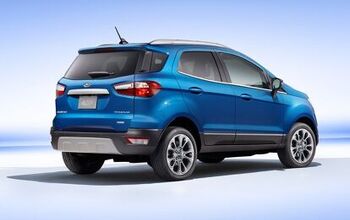



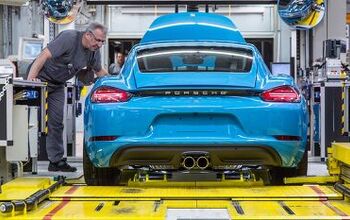

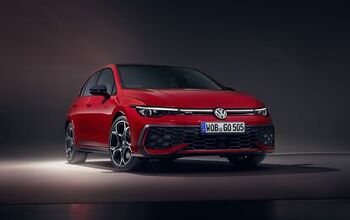
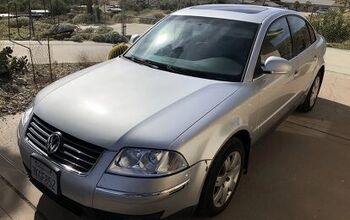
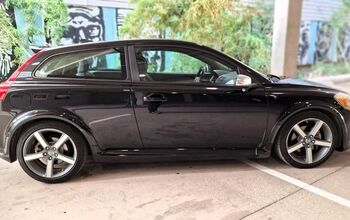


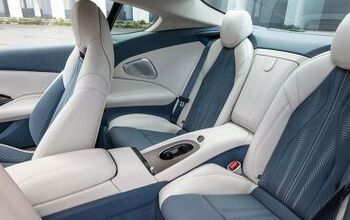
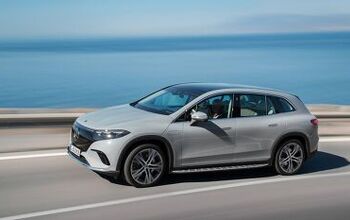
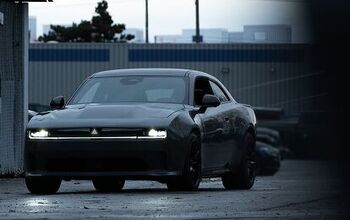



Comments
Join the conversation
I say let Europe try to go electric, if it fails there 's no hope here in the great wide open save for large metro areas. Given the shorter distance traveled, abundance of govt supported rails , car ownership in Europe has never been a necessity for most. What is sad is that Europe is going to align themselves with bad actors in order to meet it's new clean electrical demands-meaning natural gas from Russia.(nord2) It's already happening. Crimea/Ukraine would've benefitted from this new pipeline but they've been squeezed out while the EU let them get taken over.
I compare today's 'electric' vehicles to those silly CFL spiral lightbulbs that we switched to. Yes they used less 'power' than incandescent light bulbs which converted most of their energy use to creating heat. But the CFLs were only an inexpensive 'stop gap' until LEDs came on the scene. Originally LEDs were prohibitively expensive. But now their pricing is modest. They are more efficient, last considerably longer, don't produce heat and can now be used in multiple applications. All in all in many ways a 'superior' product to the old incandescent bulbs. Look for a similar evolution in vehicle propulsion.